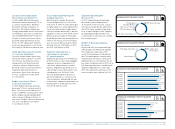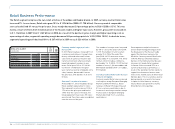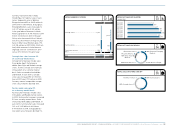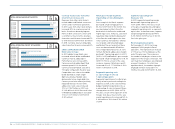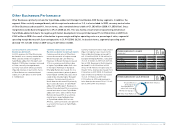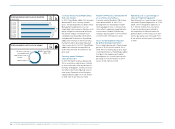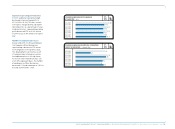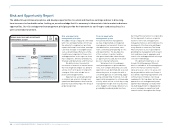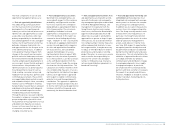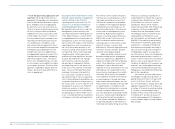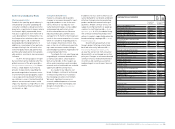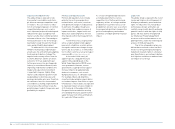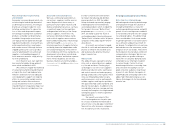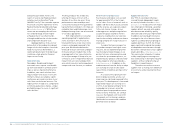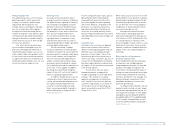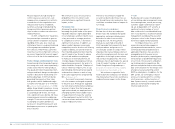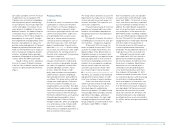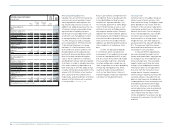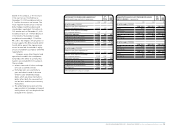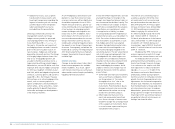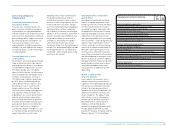Reebok 2009 Annual Report Download - page 147
Download and view the complete annual report
Please find page 147 of the 2009 Reebok annual report below. You can navigate through the pages in the report by either clicking on the pages listed below, or by using the keyword search tool below to find specific information within the annual report.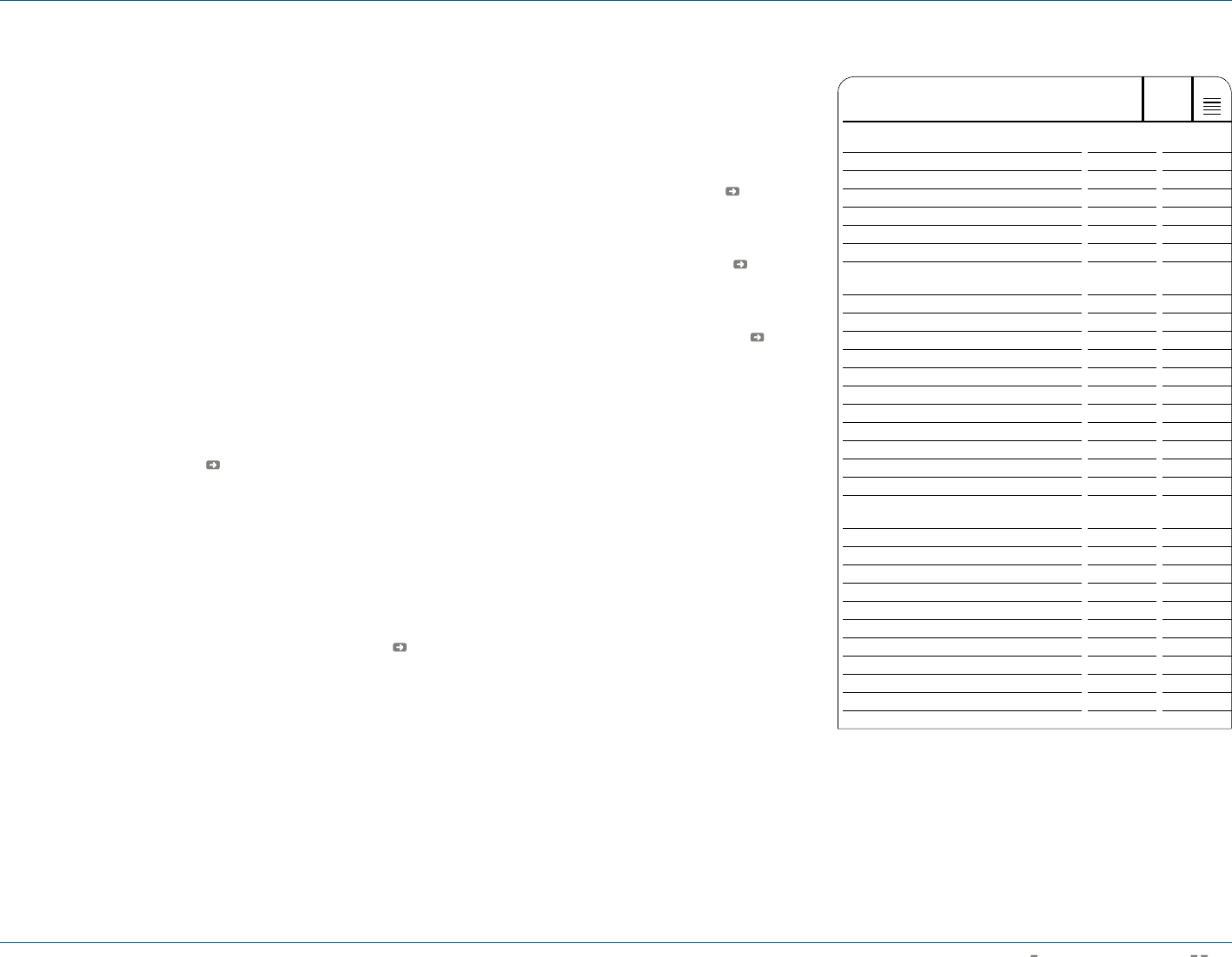
GROUP MANAGEMENT REPORT – FINANCIAL REVIEW Risk and Opportunity Report 143
External and Industry Risks
Macroeconomic risks
Growth in the sporting goods industry is
influenced by consumer spending and
consumer confidence. Abrupt economic
downturns, in particular in regions where
the Group is highly represented, there-
fore pose a significant short-term risk to
sales development. To mitigate this risk,
the Group strives to balance sales across
key global regions and also between
developed and emerging markets. In
addition, a core element of our perform-
ance positioning is the utilisation of an
extensive global event and partnership
portfolio where demand is more predict-
able and less sensitive to macroeconomic
influence.
In 2010, the Group expects the glo-
bal economy to grow modestly after the
global recession of the prior year see
Subsequent Events and Outlook, p. 156. Never-
theless, a high degree of uncertainty
prevails in expectations regarding the
pace and magnitude of economic recov-
ery. Performance per geographic region
is also expected to be mixed. Therefore,
we continue to assess the likelihood that
adverse macroeconomic events could
impact our business as high. We also still
assess the potential financial impact of
such events as high.
Consumer demand risks
Failure to anticipate and respond to
changes in consumer demand for sport-
ing goods products is one of the most
serious threats to our industry. Con-
sumer demand changes can be sudden
and unexpected, particularly in our
fashion-related businesses. Because
industry product procurement cycles
average 12 to 18 months, the Group faces
a risk of short-term revenue loss in cases
where it is unable to respond quickly to
such changes. Even more critical, how-
ever, is the risk of continuously overlook-
ing a new consumer trend or failing to
acknowledge its potential magnitude over
a sustained period of time.
To mitigate this risk, identifying and
responding to consumer demand shifts
as early as possible is a key responsi-
bility of our brands. In this respect, we
utilise extensive primary and secondary
research tools as outlined in our risk and
opportunity identification process.
As a leader in our industry, our
brand strategies continue to be focused
on influencing rather than reacting to
the changing consumer environment.
We invest significant resources in
research and development to innovate
and bring fresh new technologies and
designs to market see Research and
Development, p. 92.
In addition, we also seek to enhance con-
sumer demand for our brands and brand
initiatives through extensive marketing,
product and brand communication pro-
grammes. And we continue to focus on
supply chain improvements to speed up
creation-to-shelf timelines see Global
Operations, p. 88. In 2010, the adidas Group
will continue to bring new product inno-
vations to market, supported by extensive
brand marketing campaigns see Global
Brands Strategy, p. 58.
Given the broad spectrum of our
Group’s product offering, retailer feed-
back and other early indicators see
Internal Group Management System, p. 108,
we view the overall risk from consumer
demand shifts as unchanged versus the
prior year. Changes in consumer demand
continue to have a medium likelihood of
occurrence and could have a potential
medium impact on our Group’s financial
results.
N
°-
02
CORPORATE RISK OVERVIEW
Probability of
occurrence Potential finan-
cial impact
External and industry risks
Macroeconomic risks high high
Consumer demand risks medium medium
Industry consolidation risks high medium
Political and regulatory risks medium medium
Legal risks low medium
Risk from product counterfeiting
and imitation high low
Social and environmental risks low low
Natural risks low low
Strategic and operational risks
Risks from loss of brand image low high
Own-retail risks medium medium
Risks from rising input costs medium medium
Supplier default risks low low
Product quality risks low low
Inventory risks medium medium
Customer risks low medium
Risk from loss of key promotion
partnerships medium low
Product design and development risks low high
Personnel risks low medium
Risks from non-compliance low medium
IT risks low high
Financial risks
Credit risks medium medium
Financing and liquidity risks low high
Currency risks medium high
Interest rate risks medium low


